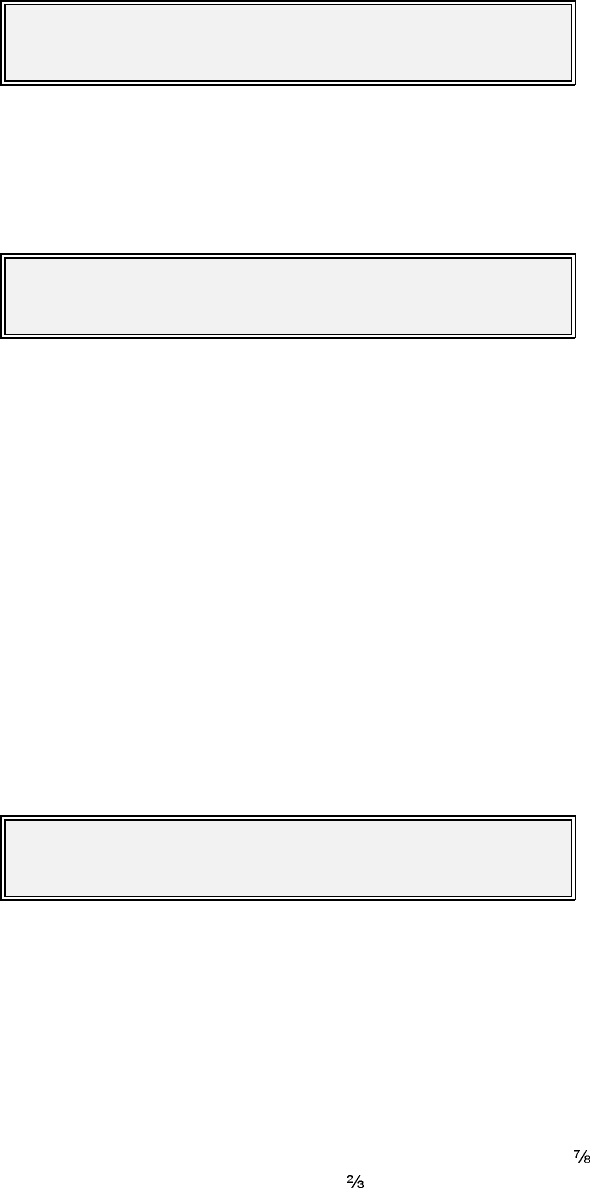
P300H P300 Series Modem Installation and Operating Handbook Page 65
Mod: 1:Freq 2:Mod’n 3:FEC 4:RS
5:Scr 6:Carr 7:Pwr 8:Spect Inv 9:AUPC
Change, Tx, Modulator Menu
Set IF Frequency: [70.0000MHz]
50-180MHz (100Hz) ???????? (YES)
Change, Tx/Rx, Mod/Demod, IF Frequency Menu
Set modulation: [?]
1=BPSK 2=QPSK 3=OQPSK 4=8PSK
Change, Tx/Rx, Mod/Demod, Modulation Menu
6.6.8 Change, Tx, MODULATOR Menu
Each option leads to the following menus:
6.6.9 Change, Tx/Rx, Modulator, IF FREQUENCY Menu
The operator is be prompted to enter the desired transmit frequency. In the 70 MHz band, the valid range
is from 50MHz to 90MHz and in the 140 MHz band the valid range is from 100MHz to 180MHz. If both the
70MHz and 140MHz IF bands are available (standard P300-IBS and above) then the range is actually
continuous from 50MHz to 180MHz (ie includes 90-100MHz). As the data entry field is 7 characters, entries
for the 70MHz band require a leading zero to be entered. The operator may enter any frequency within
either the IF band with up to 100Hz resolution. The unit will reject a frequency which falls outside the ranges
stated, and will prompt the user to re-enter the value. Once complete, the user should press the YES key
to accept the new value. Mistakes made when entering data can be corrected by using the NO/PREV key.
On later software, if the operator has set the SHF Frequency (Change, BUC/LNB, Tx/BUC, SHF
Frequency) then the BUC / Upconverter chain frequency shift is added to the IF range of the modem, and
the frequency on this edit screen is displayed and entered directly as the final SHF frequency at the
antenna.
6.6.10 Change, Tx/Rx, Modulator, MODULATION Menu
The modulation may be selected from BPSK (Bi Phase Shift Keying), QPSK (Quadrature Phase Shift
Keying), OQPSK (Offset QPSK), and if the 8PSK/TCM feature is available (standard P300-TCM) 8PSK
(Eight Phase Shift Keying). Except for the very lowest of data rates where BPSK reduces the effects of
system phase noise, QPSK or preferably 8PSK is virtually always used for bandwidth efficiency. When the
demodulator is set to OQPSK, it will take approximately twice as long to acquire a carrier (for the same
sweep width) as QPSK, due to the lack of power nulls in the OQPSK modulated carrier.
The allowable combinations of Modulation and FEC mode/Rate are:
BPSK / QPSK / OQPSK: None, Viterbi or Sequential at rate ½, ¾, or
8PSK: TCM only at rate
See the OQPSK primer below, and also refer to Appendix E “Fault Mode 12" for interworking OQPSK
between early and later P400 series modems.


















